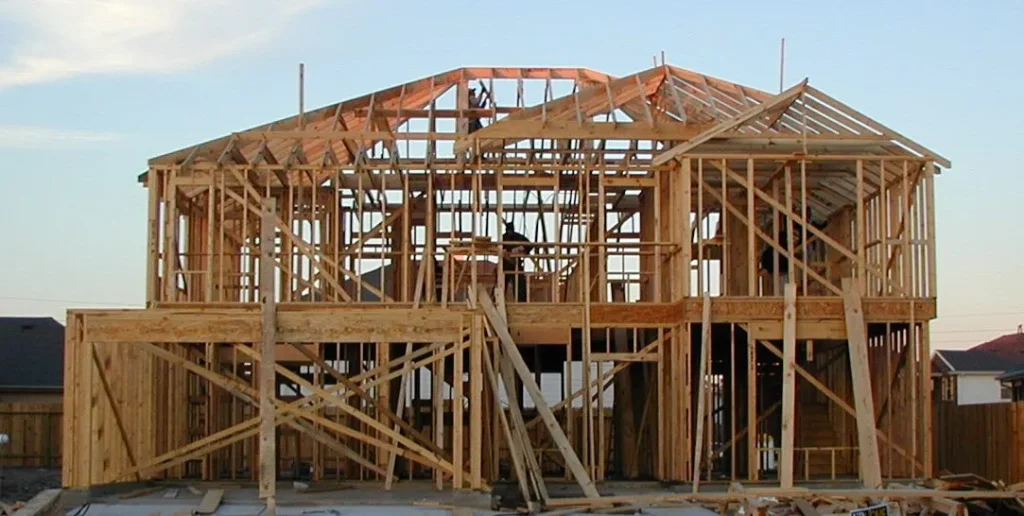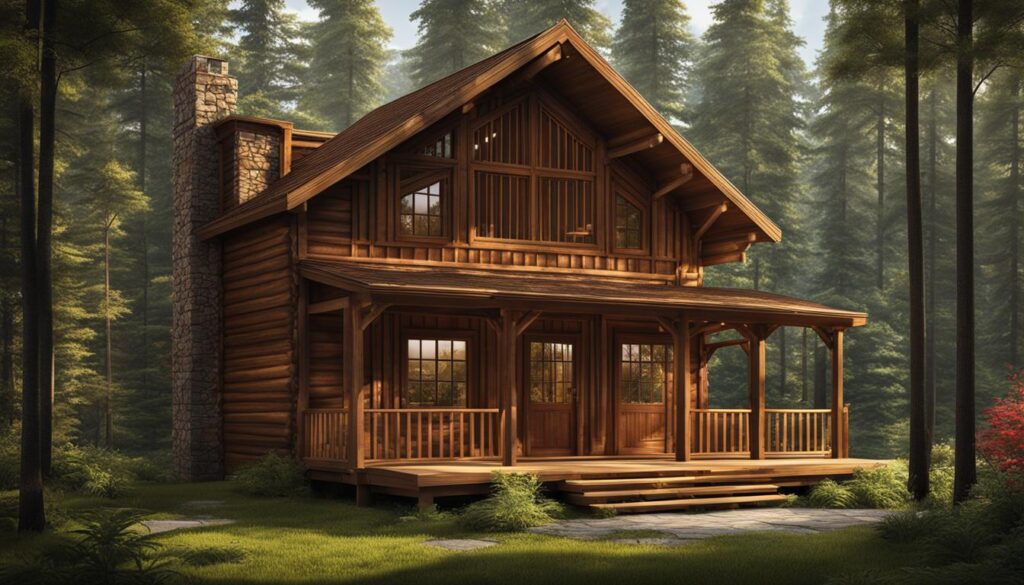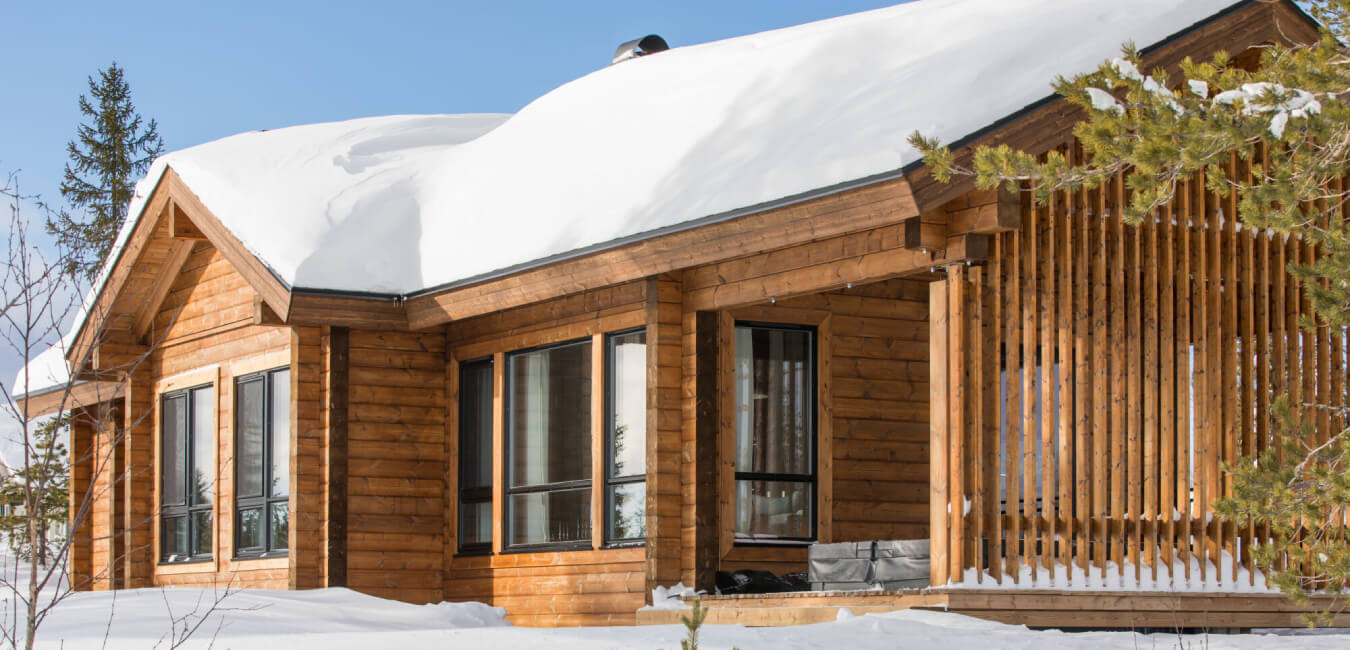As the demand for sustainable living grows, choosing the right building material has become a critical decision for eco-conscious homeowners. Wooden houses are often lauded for their minimal environmental impact compared to traditional materials like concrete and steel. This article explores the environmental implications of these materials, highlighting why wooden houses are an eco-friendly choice for a greener future.

1. Carbon Footprint of Building Materials
The carbon footprint of a building material refers to the total greenhouse gas emissions associated with its production, transportation, and use. Here’s how wood, concrete, and steel compare:
- Wood: Wood has the lowest carbon footprint among these materials. Trees absorb carbon dioxide during their growth, and this carbon remains stored in the wood throughout its lifecycle. Additionally, processing wood requires significantly less energy than manufacturing concrete or steel, making it a more environmentally friendly option.
- Concrete: Concrete has a high carbon footprint due to the energy-intensive production of cement, a key ingredient. Cement manufacturing is responsible for approximately 8% of global carbon dioxide emissions, making it one of the largest industrial contributors to climate change.
- Steel: Steel production is also highly energy-intensive, involving the mining of iron ore and the use of coal in blast furnaces. While recycled steel can reduce emissions, the overall carbon footprint of steel remains higher than that of wood.
2. Energy Efficiency and Insulation
Energy efficiency during a building’s lifecycle is another critical factor. Wooden houses excel in this area due to wood’s natural insulating properties. They retain heat in the winter and stay cool in the summer, reducing the need for artificial heating and cooling systems. This energy efficiency lowers long-term energy consumption and contributes to a smaller environmental impact.
Concrete and steel buildings, while durable, often require additional insulation materials to achieve similar levels of energy efficiency. This increases their overall environmental footprint, as the production of insulation materials adds to energy use and emissions.

3. Resource Renewability
Wood is a renewable resource, provided it is sourced responsibly from well-managed forests. Sustainable forestry practices ensure that for every tree harvested, new trees are planted to maintain ecological balance. Certifications like the Forest Stewardship Council (FSC) guarantee that the wood comes from sustainable sources.
Concrete and steel, by contrast, rely on nonrenewable resources such as limestone and iron ore. These materials cannot be replenished once extracted, making their long-term sustainability a concern. Additionally, mining and extraction processes can lead to habitat destruction and environmental degradation.
4. Waste and Recyclability
Wooden houses produce less construction waste compared to concrete and steel structures. Any leftover wood can be repurposed or composted, reducing landfill contributions. Even at the end of its lifecycle, wood decomposes naturally without releasing harmful chemicals into the environment.
While concrete and steel are recyclable, their recycling processes consume significant energy. Concrete can often only be downcycled into aggregate for roads or other non-structural uses, whereas steel recycling is more efficient but still resource-intensive.
5. Impact on Human Health
Wooden houses align with biophilic design principles, which emphasize the connection between humans and nature. Living in a wooden home can reduce stress and promote well-being. Additionally, untreated or naturally finished wood contributes to better indoor air quality by avoiding harmful chemicals.
Concrete and steel structures may involve the use of synthetic materials, such as paints, adhesives, or insulation, which can emit volatile organic compounds (VOCs). These emissions can negatively affect indoor air quality and pose health risks to occupants.
6. Durability and Lifespan
With proper care, wooden houses can last for generations, making them a sustainable long-term choice. Modern wood treatments enhance durability, protecting against pests, moisture, and decay.
Concrete and steel are inherently durable but may require significant resources for repairs and replacements over time. The environmental impact of these maintenance activities can add up, especially in regions with extreme climates.
Conclusion
The environmental impact of building materials is a crucial consideration in creating sustainable homes. Wooden houses stand out as an eco-friendly alternative to concrete and steel, offering a lower carbon footprint, renewable resource use, and energy efficiency. By choosing wood as a primary building material, homeowners can make a meaningful contribution to reducing global emissions and promoting sustainable living.
